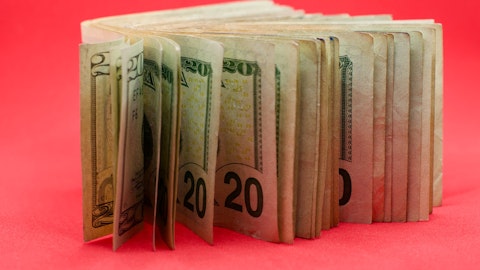Tom Capasse: Yes. They – again, team MFS has always been top quartile in terms of efficiency ratios, which obviously provides for outperformance in bear markets when we have a cyclical – yes, where we are in terms of the rate cycle. In terms of our rate outlook, which is now more biased to a persistent – the 10-year being above .5 through year-end, we’re still assuming a decline of around 50%, 60% versus the prior year and origination volume and high single-digit – but high single-digit ROEs given the retention of the contribution of their significant MSR book in which – in relation to their current downsized expense base. I don’t know, Andrew, if you would add to that, if you have something.
Andrew Ahlborn: No, I think that was good, Tom.
Operator: Thank you. Our next question is coming from the line of Steven DeLaney with JMP Securities. Please proceed with your question.
Steven DeLaney: Good morning, Tom, and Andrew, and congratulations on the deal. We covered the company BRMK, and I think it’s a perfect fit and a win-win. Can you comment on your expected time of closing the transaction? And also, Andrew, could you give us like an estimated range of where you see pro forma book value per share coming in? Thanks.
Andrew Ahlborn: Good morning. Yes, so we expect to close the transaction towards the latter half of the second quarter.
Steven DeLaney: Okay.
Andrew Ahlborn: I suspect initial book value is going to be slightly under the $15 we – or slightly under $15 post close of the transaction.
Steven DeLaney: Okay, that’s helpful. And then the fourth quarter, obviously interest rates is what’s driving a lot of things in portfolios and certainly CECL reserves. Most of the increase for the year was obviously in the fourth quarter. Could you comment just generally on, was it rates? Was it other macro things that led you to that number? And then also within that, can you comment on how much is specific rather than general? Thanks, and that’s it for me.
Tom Capasse: Yes. So, in TREP model, obviously the macro drivers are rate assumptions, unemployment, GDP, et cetera. So, the application of all those movements on to our performing portfolio is what resulted in the CECL reserve. On a specific basis, we actually released roughly $2 million in reserves. So, almost all the pressure on book value per share was from those macro assumptions and application of the TREP model.
Steven DeLaney: Fantastic. Okay. Thank you for the comments.
Operator: Thank you. Our next question is coming from the line of Christopher Nolan with Ladenburg Thalmann. Please proceed with your questions.
Christopher Nolan: Hey guys. How much of – my questions are mostly Broadmark-focused. Do these guys have any office exposure?
Tom Capasse: Adam, you want to comment on that?
Adam Zausmer: Yes. They have very little office exposure. I’d say about less than 2% of their overall portfolio.
Christopher Nolan: All right. And then I guess my next question really
Tom Capasse: Oh, sorry. We’d just point out, we’re five – under five.
Christopher Nolan: Okay, great. My next question focuses on your earnings accretion outlook. I noticed that the LTV is 60%, I presume that’s December 31st, 2022, and 27% of the loan portfolio is in default according to the slides. Is your earnings accretion outlook estimates centered on discount accretion just recovering from those defaults and so forth?
Adam Zausmer: Yes. So, no, the earnings accretion is really focused on two components. One is the expected cost synergies from the transaction, which we think will be substantial over the next couple of years. And then just the redeployment of the capital coming off the increased equity base at levered yields that are very attractive today. I think when we look at the defaults in their portfolio, we certainly think their existing CECL reserves, plus any additional CECL reserves embedded in the deal due to our underwriting, are enough to capture the protection in their balance sheet. But the accretion is really from synergies and redeployment of capital. Am I correct that when the acquisition is done, all the assets will be marked at fair value? So, in terms of incremental reserves, you’ll be on those clean slates effectively with this portfolio?




